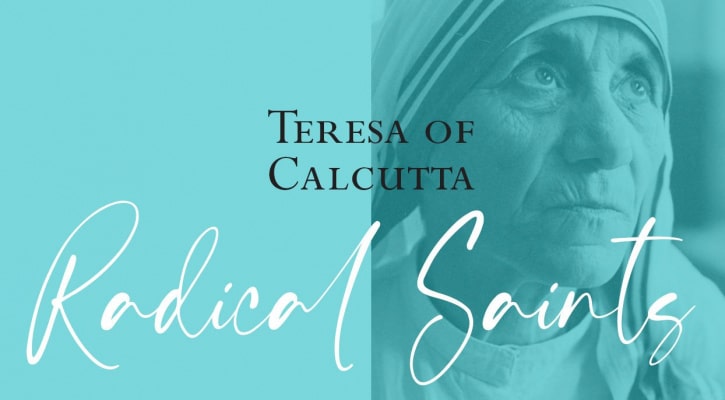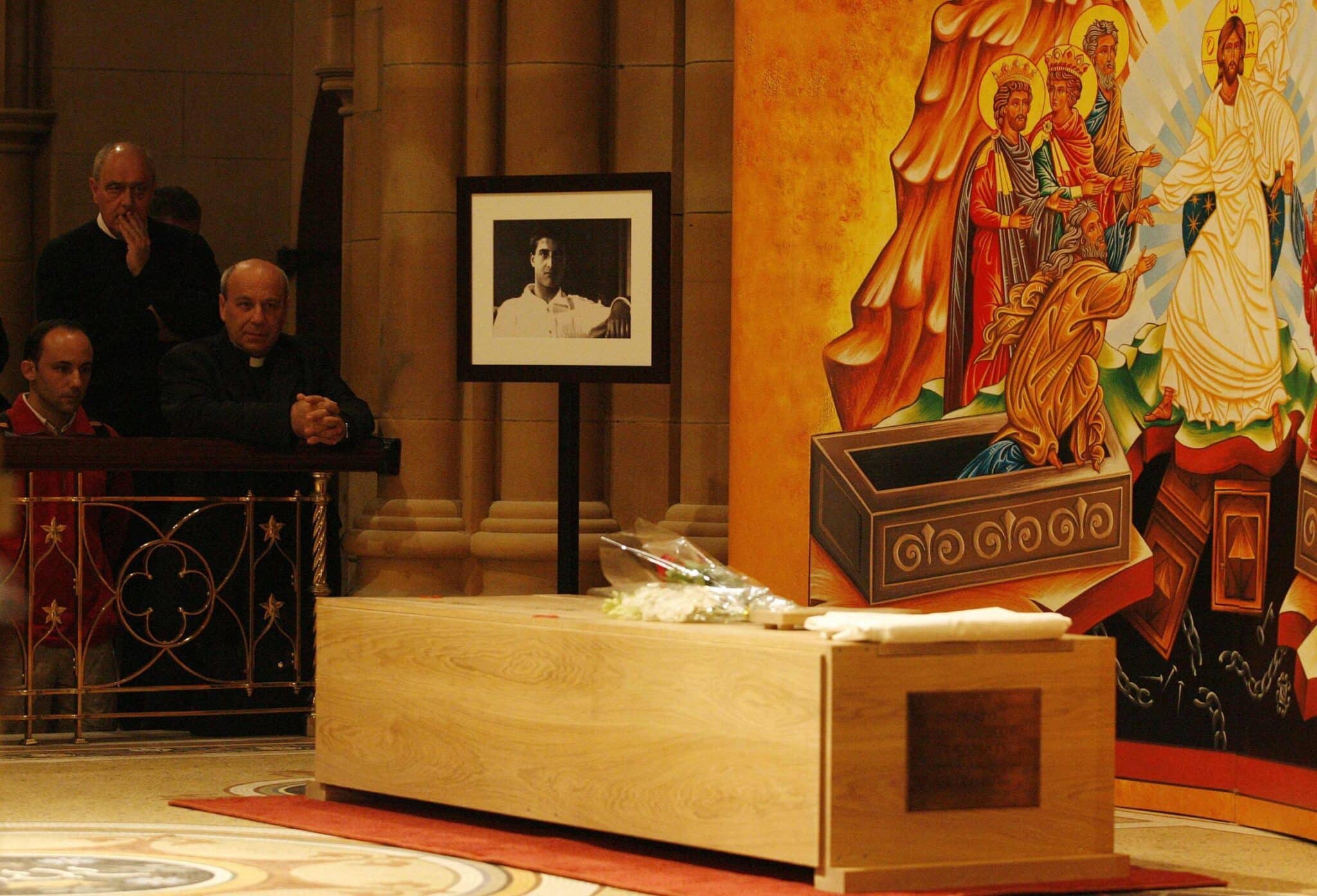Born August 26, 1910, in North Macedonia | Died September 5, 1997, in India
Canonized September 4, 2016 | Feast Day: September 5
Teresa’s Radical Gift
Mother Teresa was a radical truth speaker—whether it was delivering an anti-abortion lecture as part of her Nobel Peace Prize acceptance speech, telling the United Nations that holiness is not a luxury of the few, or replying, “Find your own Calcutta” to a high school student who wanted to know how to be like her.
Teresa’s World
Teresa’s homeland changed political hands as she grew up: from being part of the Ottoman Empire; ruled by the Serbs, then the Bulgarians; and eventually becoming part of what was known as the Kingdom of Serbs, Croats, and Slovenes. Calcutta in the years before Teresa moved there permanently experienced great unrest and suffering: a famine that claimed as much as 5 percent of the population; bombings during World War II; and the deaths of more than four thousand people in 1946 related to the desire for a Muslim state.
Teresa’s Radical Path to Holiness
You probably know the broad outlines of this story, since Mother Teresa was one of the most visible women religious—and perhaps one of the most visible women, period—of the twentieth century.
The youngest of three children, Anjez. Gonxha Bojaxhiu felt called to be a missionary from age twelve on. She discerned that she was to go to India, so she left for Ireland at age eighteen to become a Sister of Loreto. (The convent near Dublin was where missionary sisters learned English, the community’s preferred language for those bound for India.) She chose her name in religious life for Thérèse of Lisieux; since another sister already had the name, she used the Spanish spelling. After just two months, Teresa left Ireland for India, arriving on January 6, 1929. In 1931, she was assigned to teach geography and catechism at the sisters’ school.
Teresa seemed to be a natural teacher and administrator. Before her mid-thirties, she was principal of the school and overseeing a community of Indian women religious affiliated with the sisters. Then, two weeks after her thirty-sixth birthday, she was on a 400-mile train trip after a retreat when she received her “call within a call.” The Lord wanted her to leave the convent to live among the poorest of the poor.
Twenty-seven months later, wearing the white-and-blue sari the world would come to know so well, Teresa experienced her first days in the Calcutta slums. The Society of the Missionaries of Charity was established less than two years later, and Teresa became an Indian citizen. The sisters ministered to those dying in the streets, to those suffering from a variety of diseases and disabilities, and to orphans. The year before she died, her community had more than five hundred missions in more than one hundred countries. All this happened as Teresa experienced a deep spiritual dryness that went on for decades. The awards rolled in: the Nobel Peace Prize. An address to the United Nations. A speech to a National Prayer Breakfast in the United States. India’s highest civilian honor.
There was just one thing: Teresa’s propensity for speaking her truth, regardless of the audience, made many people uncomfortable. It led them to look for inconsistencies in what she said and what she did, and it stirred up public criticism. She seemed to shrug it all off without a second thought—and kept talking. Here are some examples:
- When she won the 1979 Nobel Peace Prize, she told the committee to help the poor with the nearly $200,000 that would have been used for a banquet. In her speech, she attacked abortion: “The greatest destroyer of peace today is the cry of the innocent unborn child. For if a mother can murder her own child in her womb, what is left for you and me to kill each other?”
- Teresa also was radically blunt at a February 1994 National Prayer Breakfast, with President Clinton, Vice President Gore, and their wives in attendance: “Any country that accepts abortion is not teaching its people to love one another but to use any violence to get what they want.”13 She urged those considering abortion to “give the child to me.”
- At the same event, she took on birth control other than natural planning: “In destroying the power of giving life or loving through contraception, a husband or wife is doing something to self. This turns the attention to self, and so it destroys the gift of love in him and her.”
- In a 1985 address to the United Nations, Teresa again called for an end to abortion, and issued additional challenges to the delegates. Holiness, she told them, “is not a luxury of the few. It’s a simple duty for each one of us.” She also urged them to combat poverty in the very largest sense: “I find that the poverty of loneliness, the poverty of being unwanted, unloved…a throwaway of society, is a very difficult and very, very burdensome poverty, very difficult to remove.”
- In 1982, Teresa made a stop at a Catholic high school in northern Virginia, where a student asked her, “How do we become like you?” It almost certainly wasn’t the first or last time she was asked that question. She didn’t encourage the student to pray or do her homework or study Church teachings. “Find your own Calcutta,” she said. As I said, Teresa’s truths may make you uncomfortable. There’s no gray area there; to her, abortion, contraception, poverty, and the contemplation of the Lord’s plan for a high schooler were all pretty cut and dried. She was radical in her straightforwardness, in the way she spoke truth. But then, so was Jesus.
Praying with Teresa
St. Teresa, I tremble at the thought of saying aloud to an unreceptive audience
the words the Lord places on my heart and soul. Help me to speak the truth,
compassionately, but boldly.








